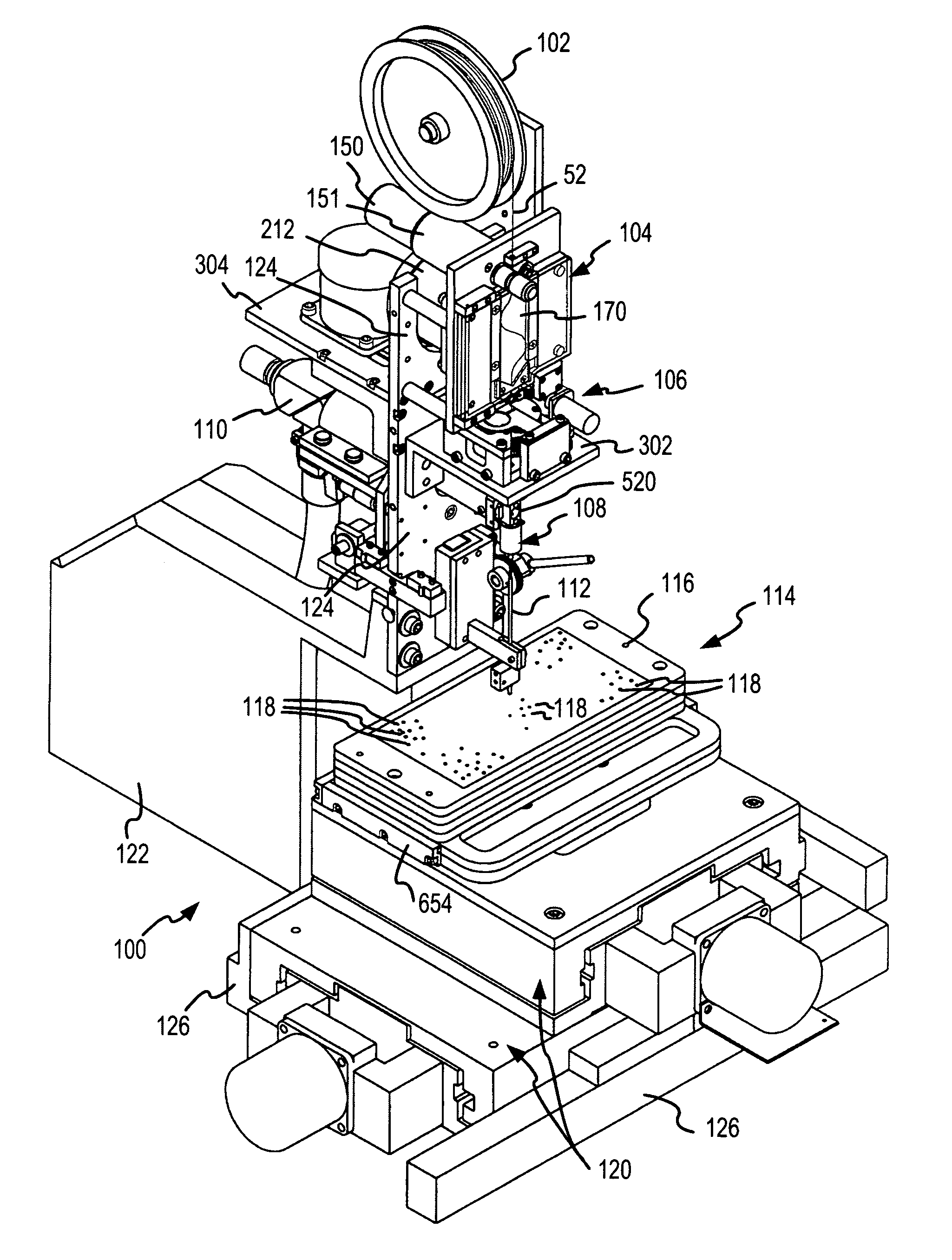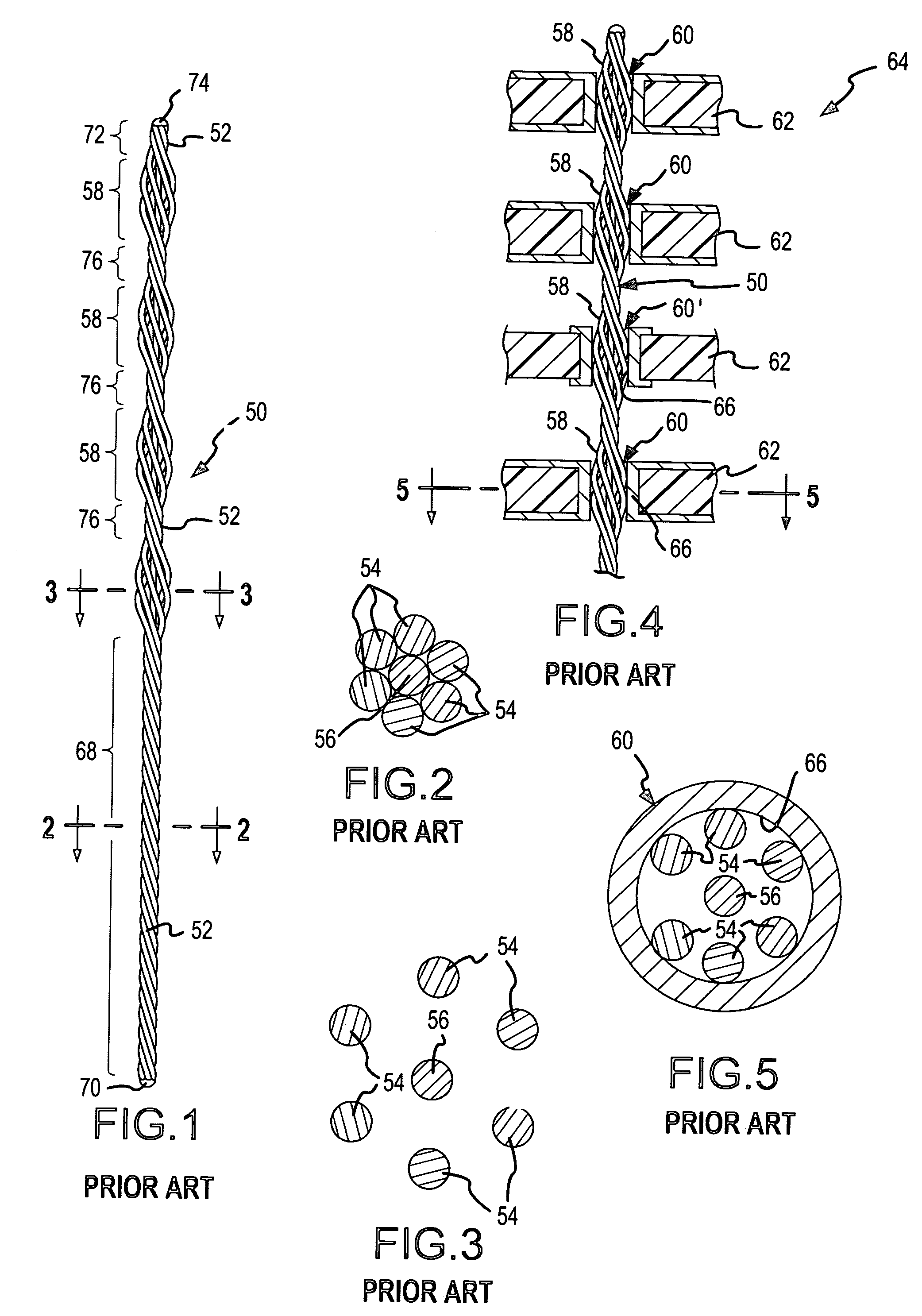Rotational grip twist machine and method for fabricating bulges of twisted wire electrical connectors
a technology of twisted wire and twisting machine, which is applied in the direction of line/current collector details, electrical apparatus, and connection formation by deformation, etc., can solve the problems of reducing the speed of fabricating twisting pins, and achieve the effects of reducing the number of twisting pins
- Summary
- Abstract
- Description
- Claims
- Application Information
AI Technical Summary
Benefits of technology
Problems solved by technology
Method used
Image
Examples
Embodiment Construction
[0056]The present invention is preferably incorporated in an improved machine 100 which fabricates twist pins 50 (FIG. 1), and an improved methodology for fabricating bulges 58 (FIG. 1) of twist pins, as shown and understood by reference to FIG. 6. The twist pins are fabricated from the gold-plated, beryllium-copper wire 52 which is wound on a spool 102. A wire feed mechanism 104 of the machine 100 unwinds the wire 52 from the spool 102 and accurately feeds the wire to a bulge forming mechanism 106 which is located below the wire feed mechanism 104. The bulge forming mechanism forms the bulges 58 (FIG. 1) at precise locations along the length of the wire 52. The positions where the bulges 58 are formed are established by the advancement of the wire 52 by the wire feed mechanism 104. The bulge forming mechanism 106 forms the bulges by gripping the wire 52 and untwisting the wire in the reverse or anti-helical direction.
[0057]After all of the bulges of the twist pin 50 (FIG. 1) have b...
PUM
| Property | Measurement | Unit |
|---|---|---|
| Length | aaaaa | aaaaa |
| Time | aaaaa | aaaaa |
| Thickness | aaaaa | aaaaa |
Abstract
Description
Claims
Application Information
 Login to View More
Login to View More - R&D
- Intellectual Property
- Life Sciences
- Materials
- Tech Scout
- Unparalleled Data Quality
- Higher Quality Content
- 60% Fewer Hallucinations
Browse by: Latest US Patents, China's latest patents, Technical Efficacy Thesaurus, Application Domain, Technology Topic, Popular Technical Reports.
© 2025 PatSnap. All rights reserved.Legal|Privacy policy|Modern Slavery Act Transparency Statement|Sitemap|About US| Contact US: help@patsnap.com



